Adventurers Discover Parts Of Ancient Viking Sword Separated For 1,200 Years
We’ve all got at least one odd sock languishing in a drawer somewhere, its mate inexplicably missing. This phenomenon is so common that Wikipedia has a page dedicated to it. As it turns out, even our Viking ancestors felt the frustration – just with swords instead of socks.
In 2022, Norwegian treasure hunters achieved something with a Viking sword that we’d all like to do with our socks – they found out where the missing pieces had gone. So, what happened?
It All Started With An Unlikely Discovery
Though we don’t yet have a machine capable of locating missing socks, we do have one that can find missing swords. If you haven’t already guessed, the machine in question is a metal detector.
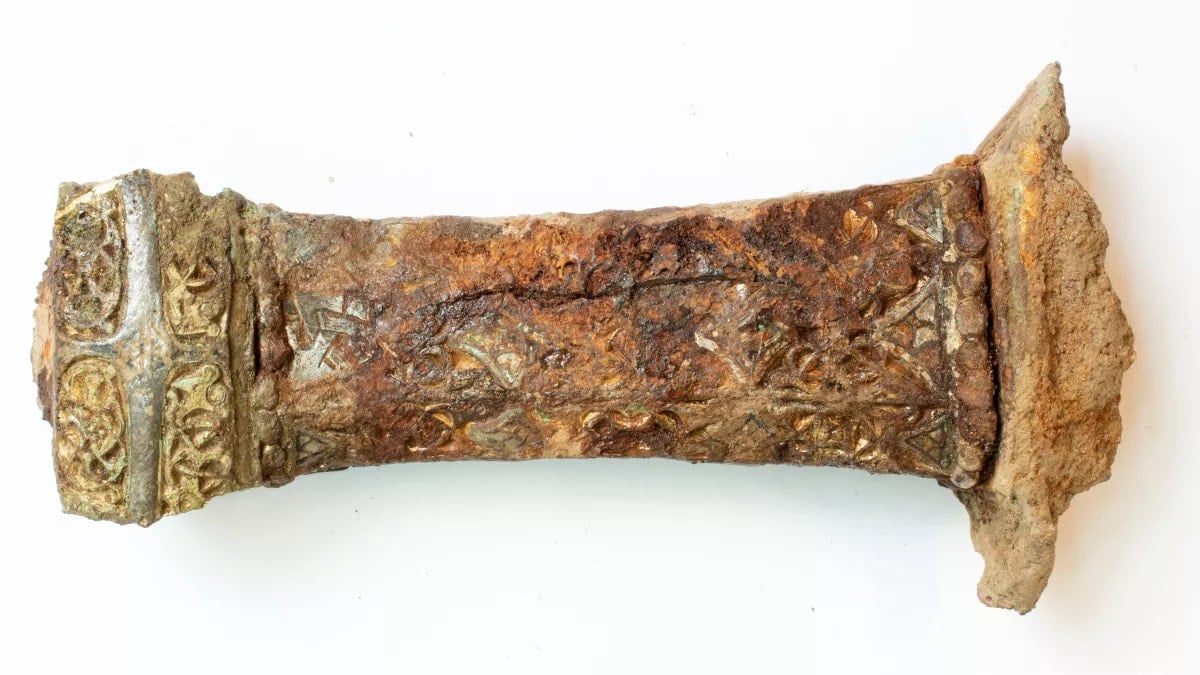
Source: Lise Chantrier Aasen/Stavanger Museum
Most amateur detectorists are happy if they find a lost wedding ring among the buried beer cans. However, one Norwegian treasure hunter stumbled upon a rare and thrilling find – a genuine piece of an ancient, ornate Viking sword.
The Second Piece Of The Puzzle
Finding a well-preserved piece of a 1,200-year-old sword is amazing enough, but this story got even more incredible when, one year later, a different treasure hunter unearthed another piece of the same sword.
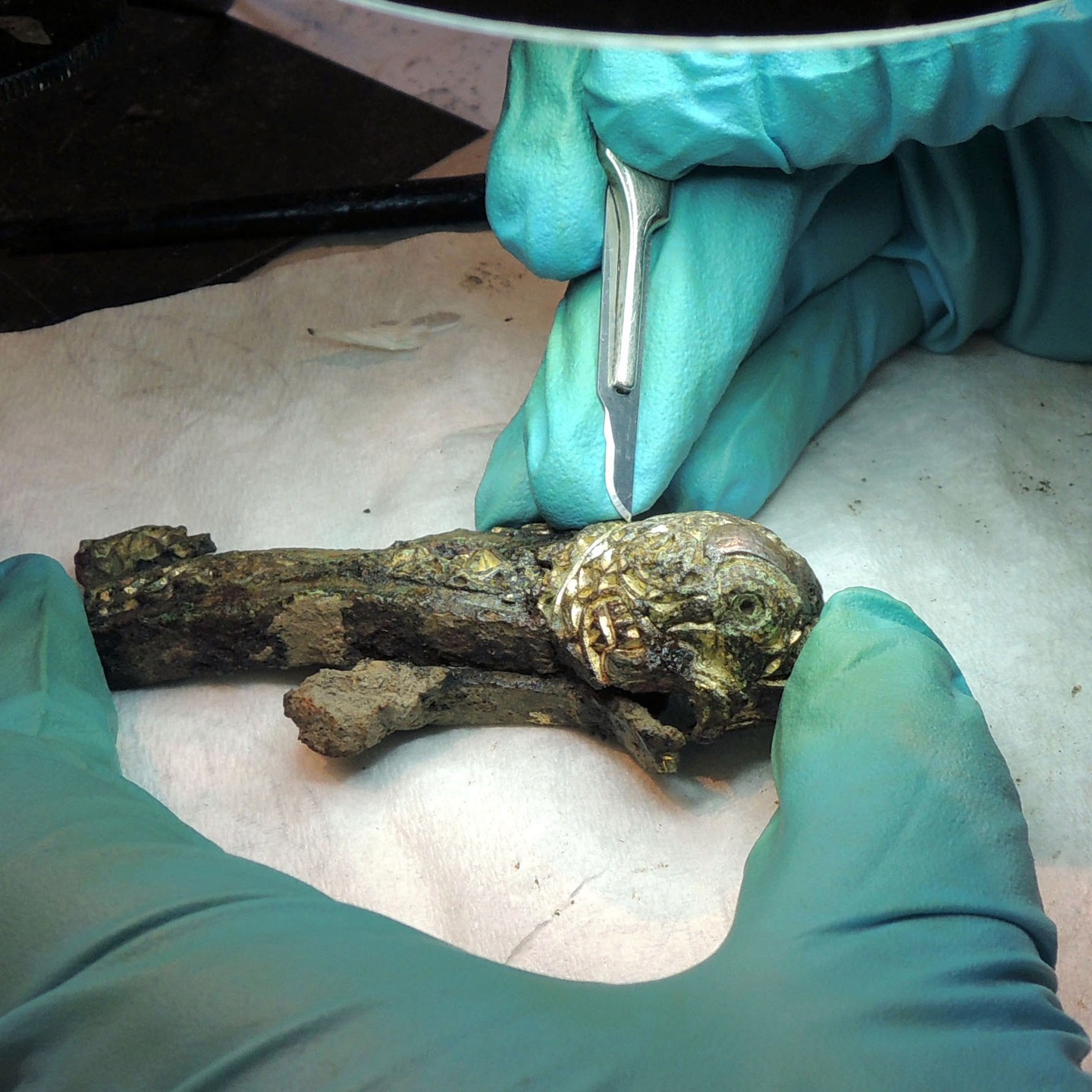
Source: Lise Chantrier Aasen/Stavanger Museum
Both pieces were found in Stavanger, on the west coast of Norway, each being discovered by a different detectorist. However, the two men who found the pieces are good friends. Thankfully, they both submitted their stunning finds to a nearby archaeological museum, and to everyone’s shock and delight, the pieces fit together like two parts of an ancient puzzle.
A Rare Viking-Age Sword
Thousands of swords have been unearthed, dated, and classified in Scandinavia, but only 20 or so match the profile of the newly discovered weapon. This makes it a rare find among an already rare class of artifacts.
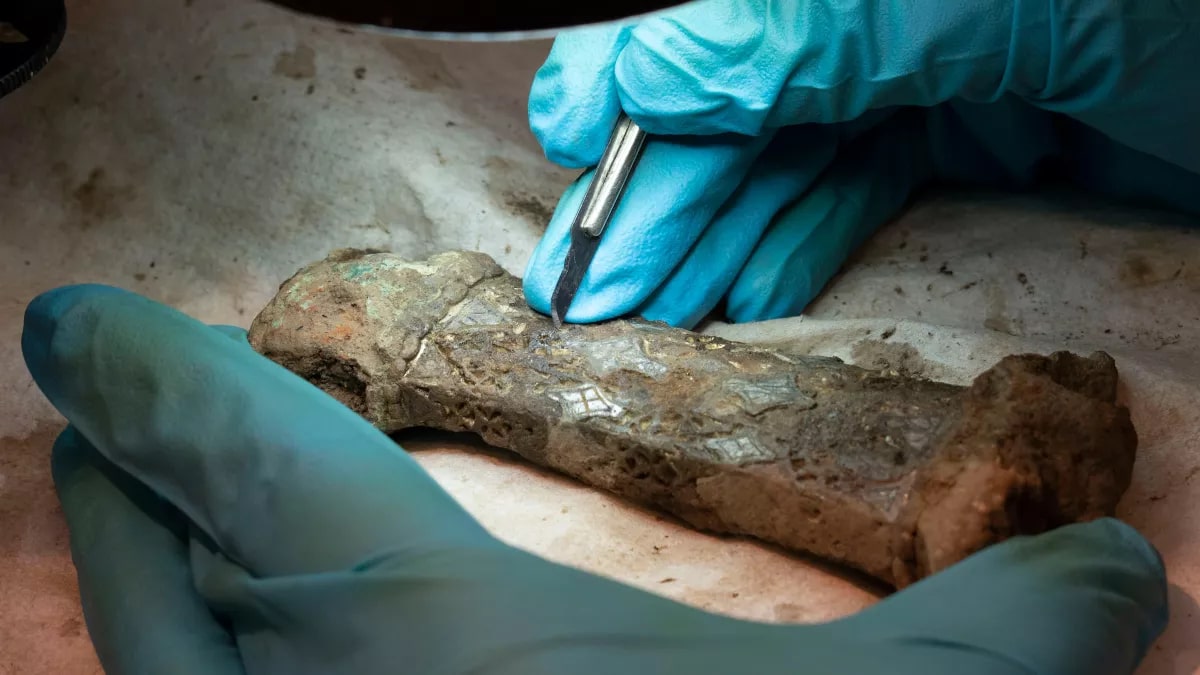
Source: Lise Chantrier Aasen/Stavanger Museum
At this stage, the blade is still missing, but thanks to the work of the detectorists, archaeologists have been able to piece together the hilt and examine its intricate carvings and fine details.
What Did Viking Swords Look Like?
The Viking Age stretched from around 793 CE to roughly 1066 CE, and the swords hewn during this time have many similarities. However, they also differ depending on where they were made, who the swordsmith was, and who the intended owner was.
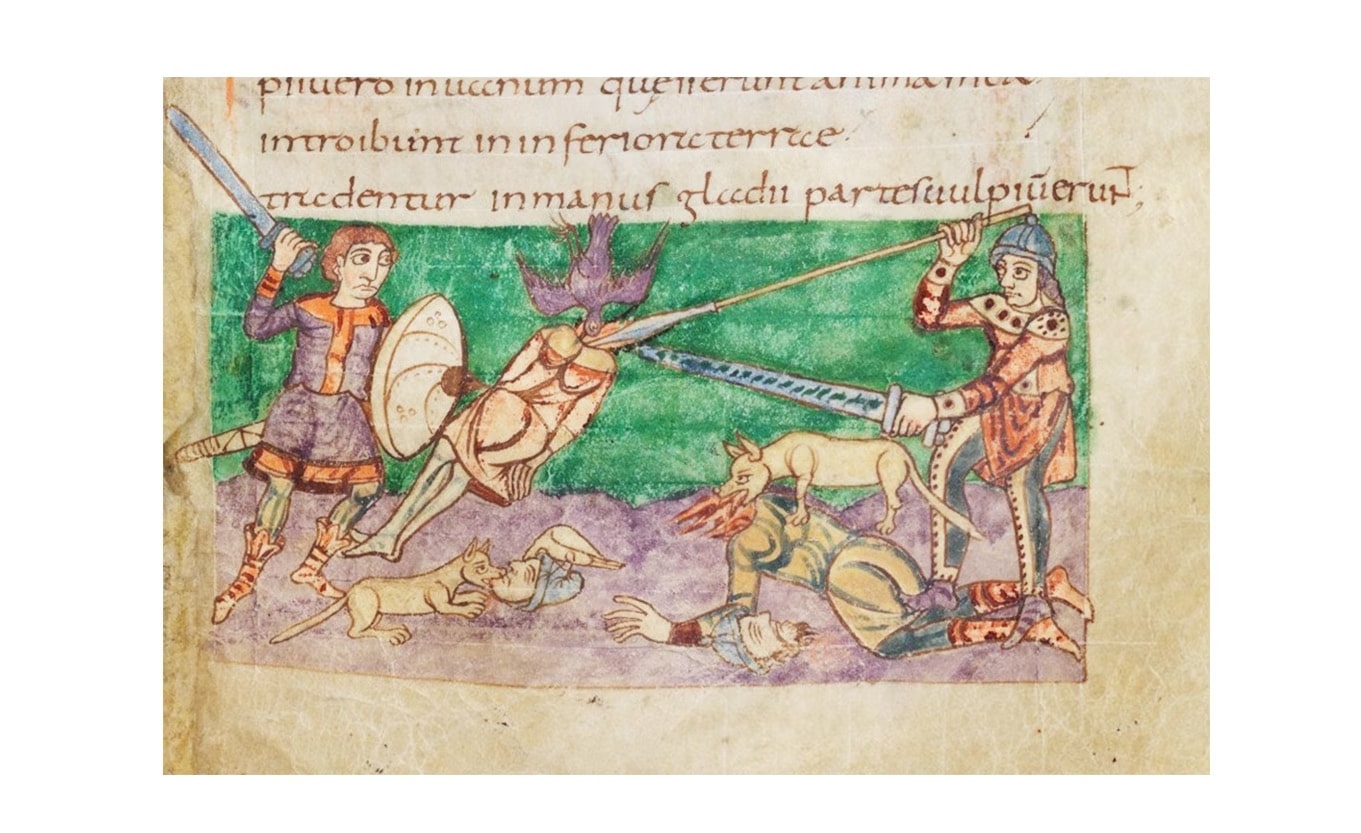
Source: Art Institute Chicago
One thing Viking swords share in common is that they are carefully crafted works of art made via secretive methods. According to Ann Zanette Glørstad, one of the archaeologists who worked on the recently discovered sword, this piece was particularly special.
What’s So Special About This Sword?
Though the owner of the sword remains a mystery, Glørstad explained to Live Science that it must have belonged to someone incredibly impressive. How does she know this? The answers lie in craftsmanship.

Source: Lise Chantrier Aasen/Stavanger Museum
The beautiful sword hilt features gold and silver detailing, and the intricate carvings depict some kind of animal. In Glørstad’s words, this impressive sword “must have belonged to someone with the means to acquire it, as well as someone who wanted to demonstrate their social status.”
A Type-D Viking Sword
So far, Ann Zanette Glørstad has gleaned that the weapon is most likely a “type-D sword.” Below is a picture of a more well-preserved type-D Viking sword. This one was found in the Netherlands, near Aalburg.

Source: Wikimedia Commons
These swords were crafted around 750 CE to 850 CE and are known for their gold detailing. They are also some of the heaviest Viking swords ever made.
When Was the Viking Sword Made?
The craftsmanship of the sword hints at more than just the status of its former owner. From the style of ornamentation, Glørstad deduced that it was likely forged around 1,200 years ago in the Frankish Empire or possibly in England.
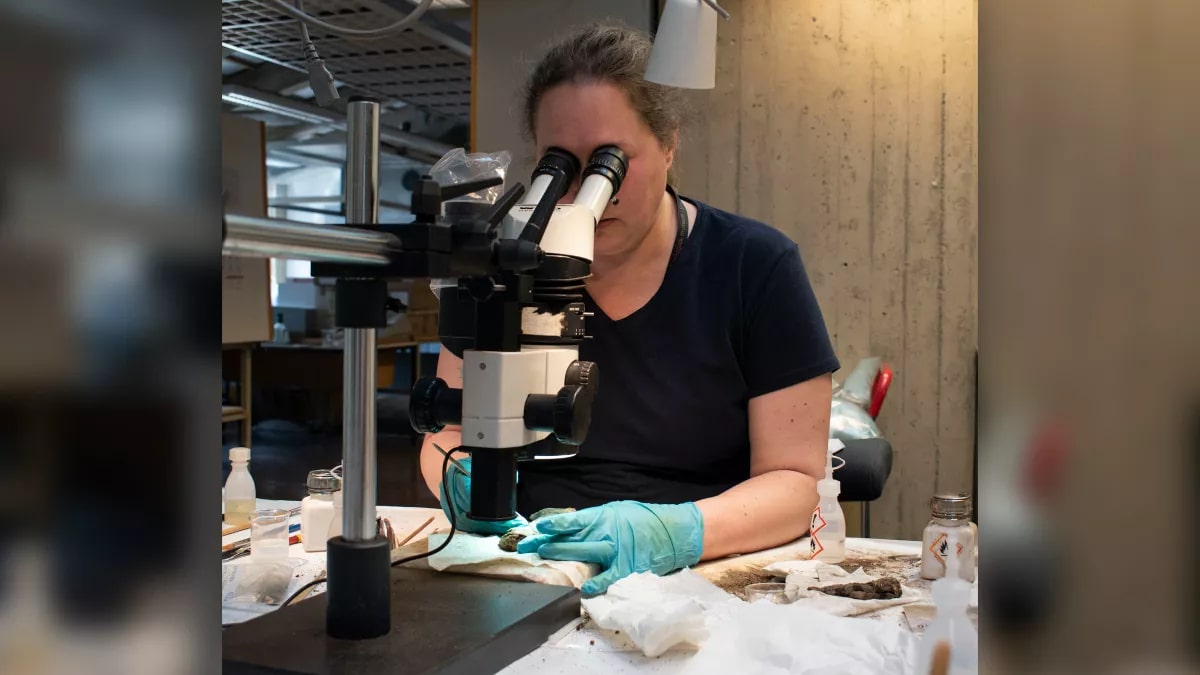
Source: Lise Chantrier Aasen/Stavanger Museum
Another possibility is that a talented local Norwegian swordsmith drew inspiration from the style of Frankish weapons in forging the sword. Regardless, there’s no denying that it’s a beautiful, finely crafted weapon.
Figuring Out The Owner Of The Sword
Though we can’t tell who owned the sword from the hilt alone, this mystery may eventually be solved. Apparently, the answer may lie with the blade.
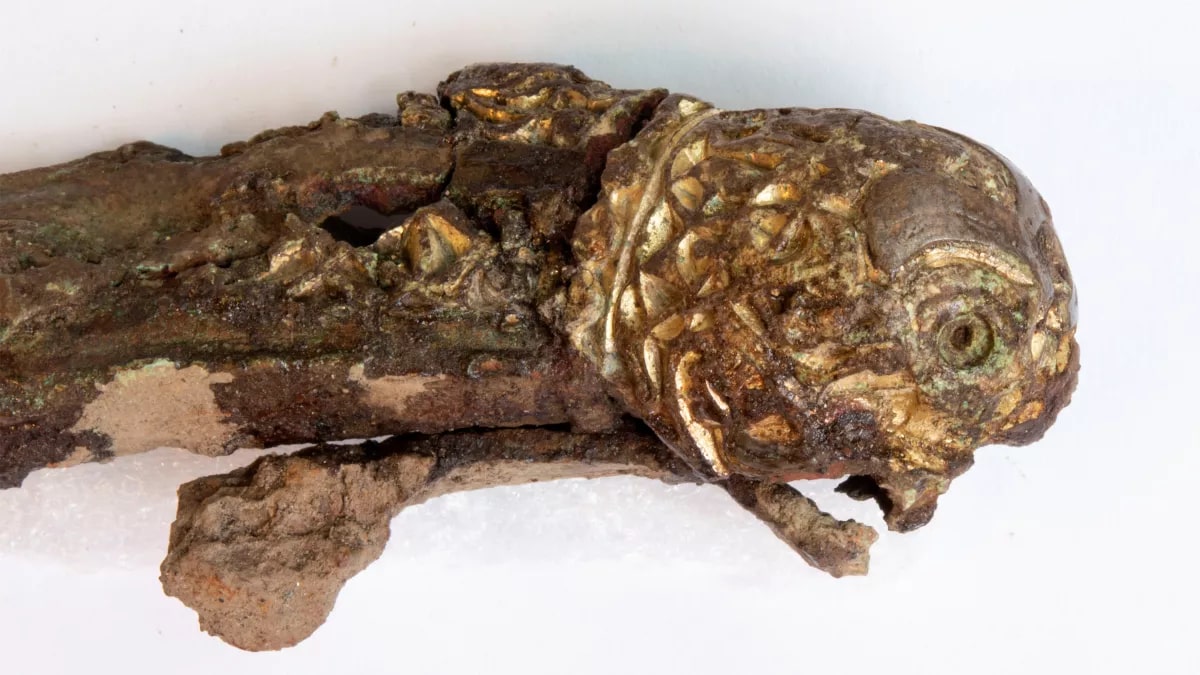
Source: Lise Chantrier Aasen/Stavanger Museum
In the Viking Age, it was common for people to have their names inscribed on the blade of their swords. So, if those talented detectorists keep at it, they may eventually find the final piece to this fascinating puzzle. Until then, scientists are following other clues in their search for more information about the weapon and its owner.
Could It Have Belonged To Viking Royalty?
The sword pieces were found in Stavanger, Norway – a place steeped in Viking history. You may have seen or heard of the stunning Swords of Stavanger monument, built in honor of the Battle of Hafrsfjord.
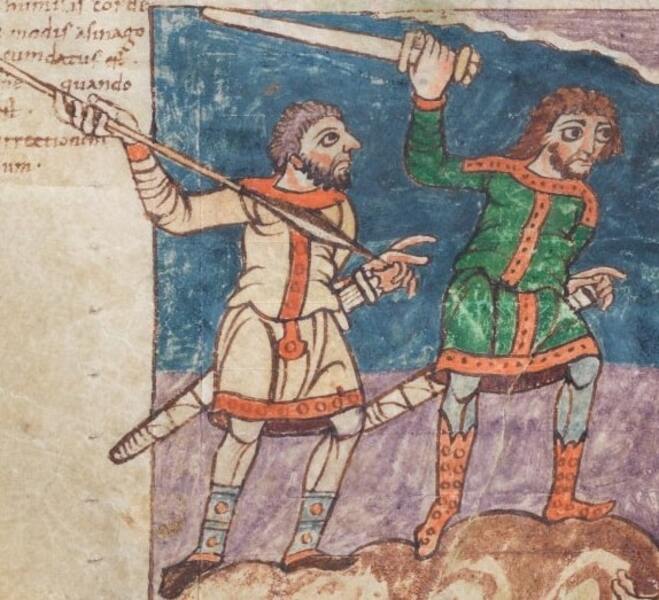
Source: Wikimedia Commons
This historic battle took place in 872 CE – the same decade during which the recently discovered sword may have been hewn. Indeed, its owner could have had involvement in the battle.
The Swords Of Stavanger – Sverd i fjell
Below, you can see the Sverd i fjell monument, which commemorates the battle of Hafrsfjord. It holds a lot of significance as it was instrumental in helping King Harald Fairhair unite the kingdom of Norway.

Source: Giuseppe Milo/Wikimedia Commons
The grave of a Viking queen was also uncovered in this part of Norway, and the region is full of fascinating stories. Anyone interested in Viking history would do well to visit Stavanger. Who knows – if you bring a metal detector, you may even make a discovery that earns you a place in the history books!
Was The Sword An Original Or A Copy?
There certainly have been plenty of Viking sword forgeries over the years. In the picture below, you can see the difference between an original sword from a famous Viking swordsmith and a copy.
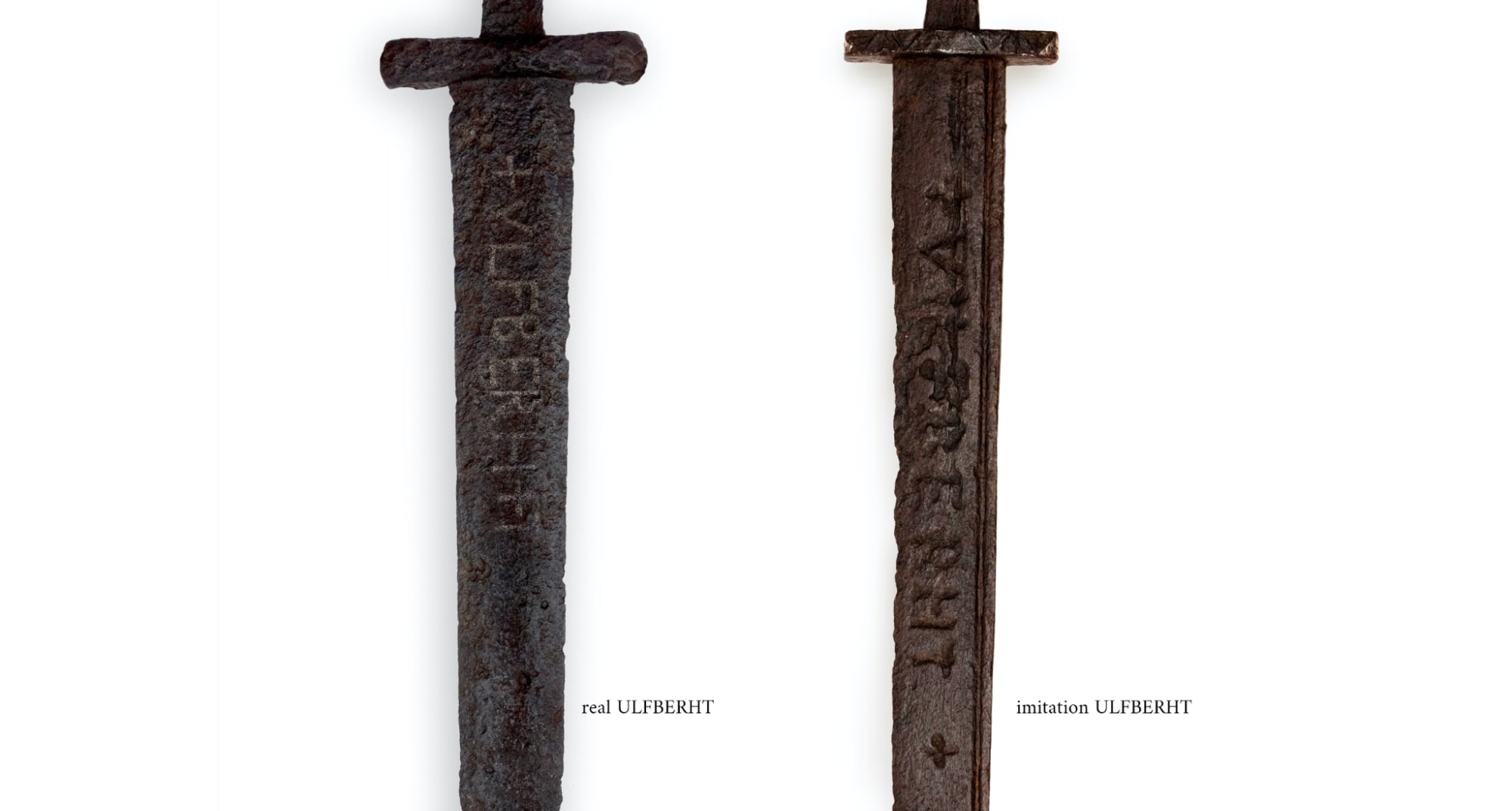
Source: Art Institute Chicago
To an untrained eye, it’s hard to tell the difference. However, if you look closely, you can see how much hardier the original sword is. The imitation has far more wear and tear and chips along the edge of the blade. The inscription has also corroded, while the original remains in excellent condition.
Fire Damage On Viking Swords
It’s common for the remains of Viking swords to feature fire damage. Can you hazard a guess at the reason? If your answer was “funeral pyres,” then you’re right on the money!
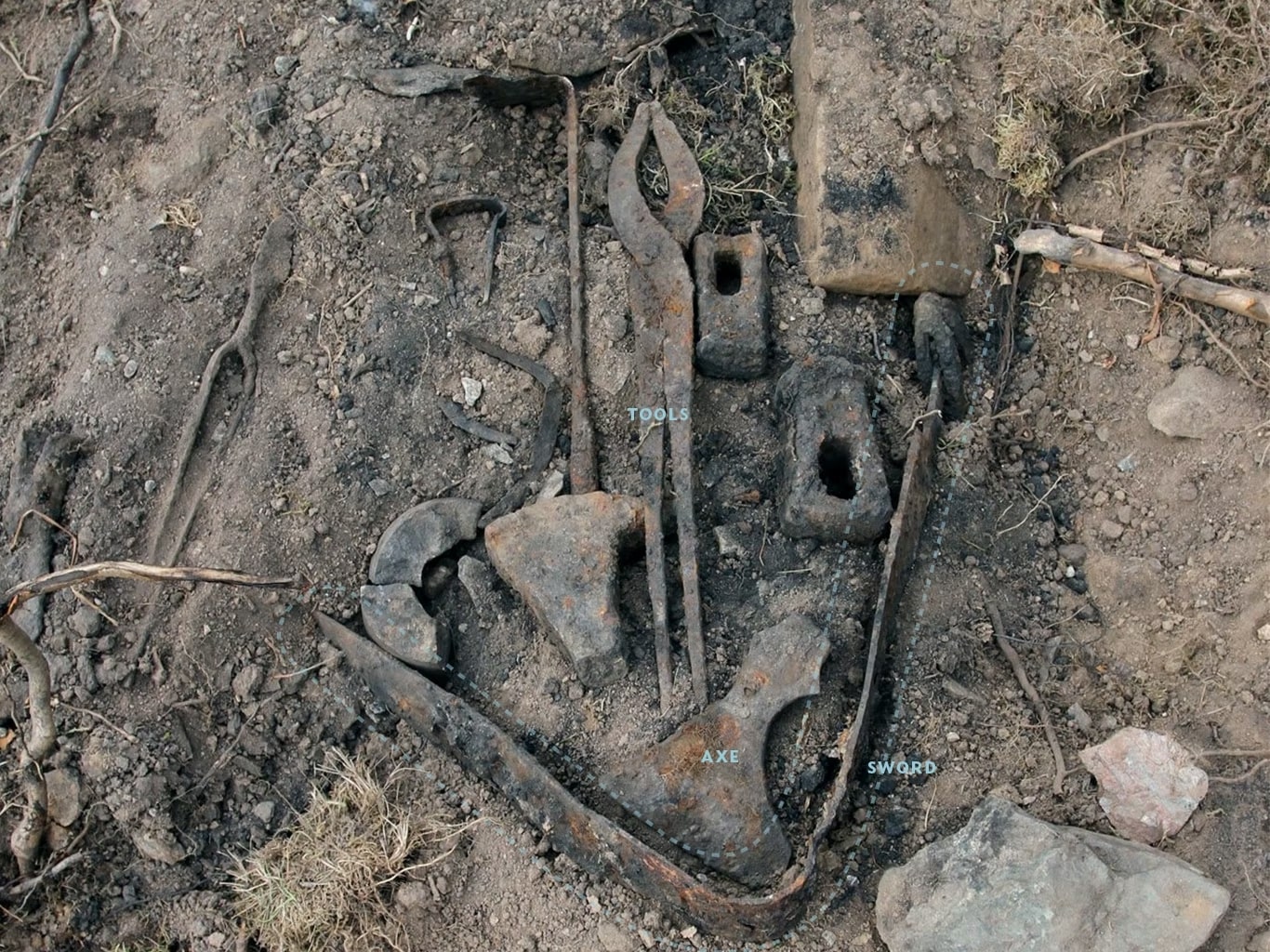
Source: Art Institute Chicago
Funeral pyres were an important part of Viking culture, and once the final embers had cooled, it was common for any remaining objects and ashes to be collected and buried in a pit. In the picture above, you can see the uncovered remains of a Viking cremation site.
A Sword With A Story
The recently discovered sword did not feature any indications that it was involved in a fire, which is a clue in and of itself. It’s possible that the weapon was won by its owner in a battle or a raid.
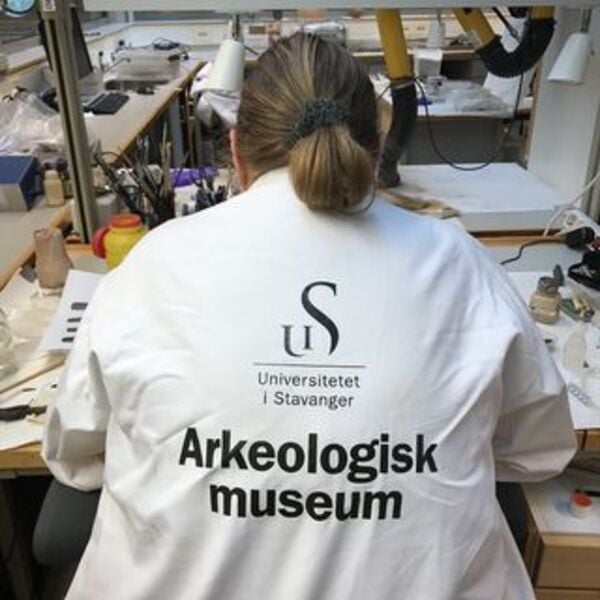
Source: Lise Chantrier Aasen/Stavanger Museum
Of course, this is just one of many possible twists and turns it could have taken in its life. Archaeologists like Ann Zanette Glørstad are hard at work restoring the sword pieces and examining them for clues.
Restoring And Preserving Artifacts
When discoveries like these are made, they must be turned over to the experts as quickly as possible. This is the best way to ensure they can be properly restored, preserved, and studied.
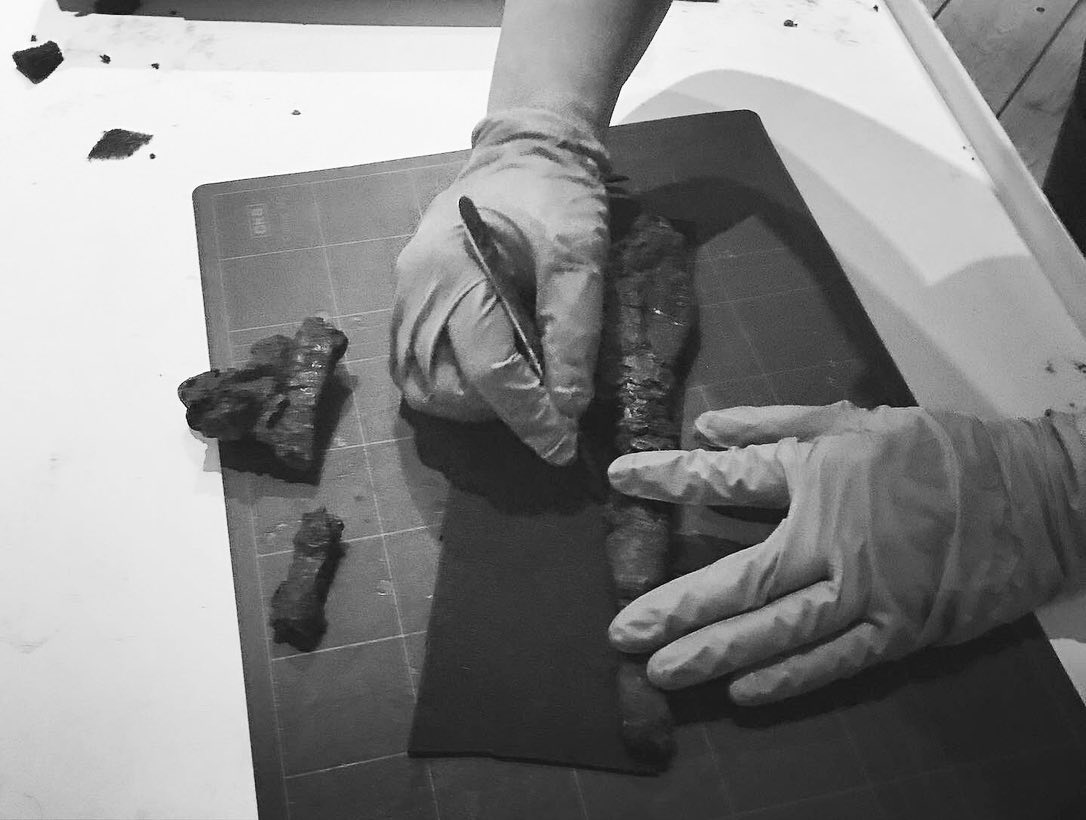
Source: Lise Chantrier Aasen/Stavanger Museum
Many people throughout history have kept artifacts for themselves (or held onto them in the hopes of getting a museum to pay millions for them). In the end, this often destroys important pieces of history.
A Glimpse Into History
As you can see by this close-up of the recently discovered Viking sword, it would be a great shame for such artifacts to be lost, destroyed, or hidden. They offer us an incomparable glimpse into human history, hinting at parts of ourselves and our past that would otherwise lie completely out of reach.
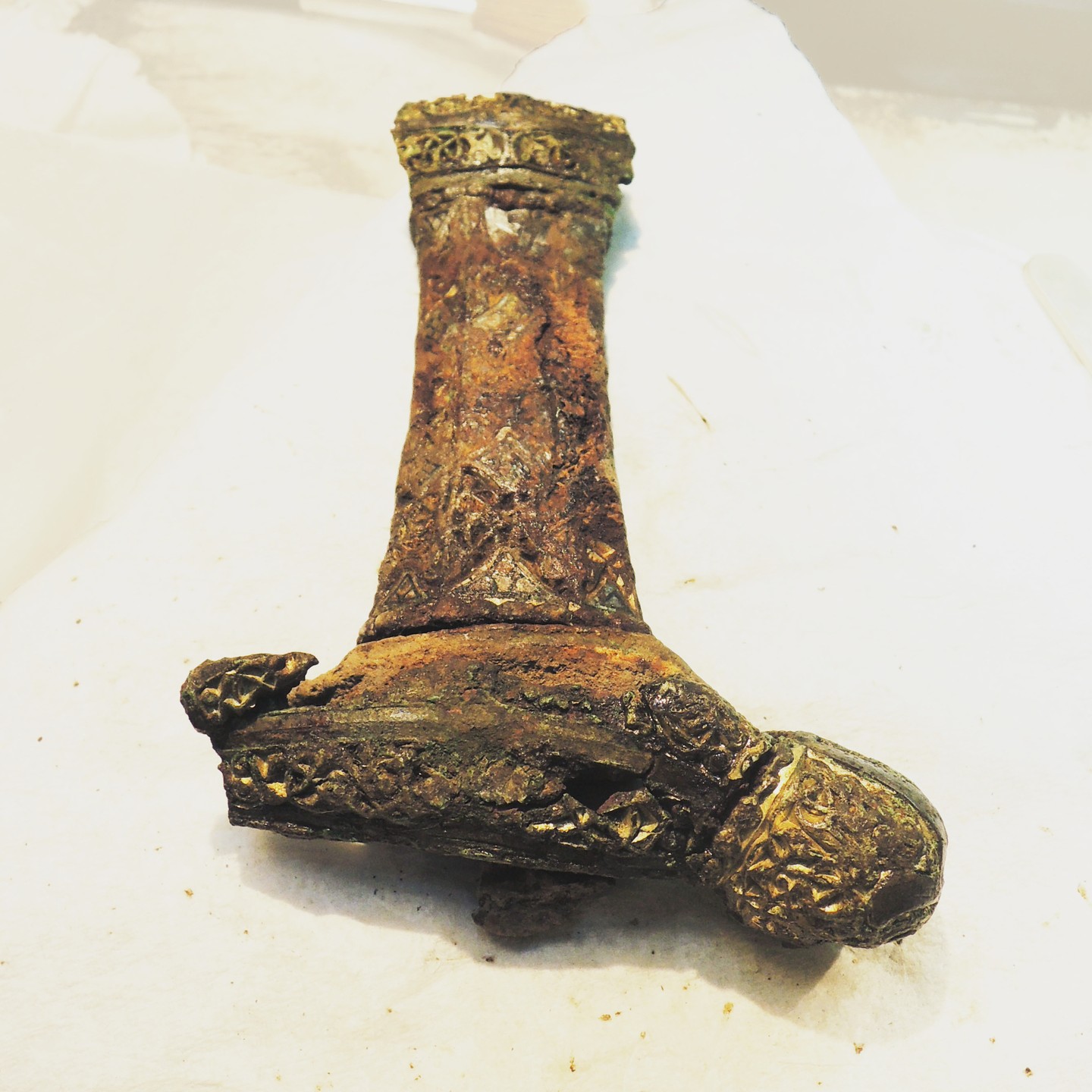
Source: Lise Chantrier Aasen/Stavanger Museum
In this case, the sword is considered particularly rare as it doesn’t bear obvious similarities to other weapons made around this time and in this region. So, if the blade is ever found and matched to the two pieces comprising the hilt, a small but significant historical mystery may be solved.
